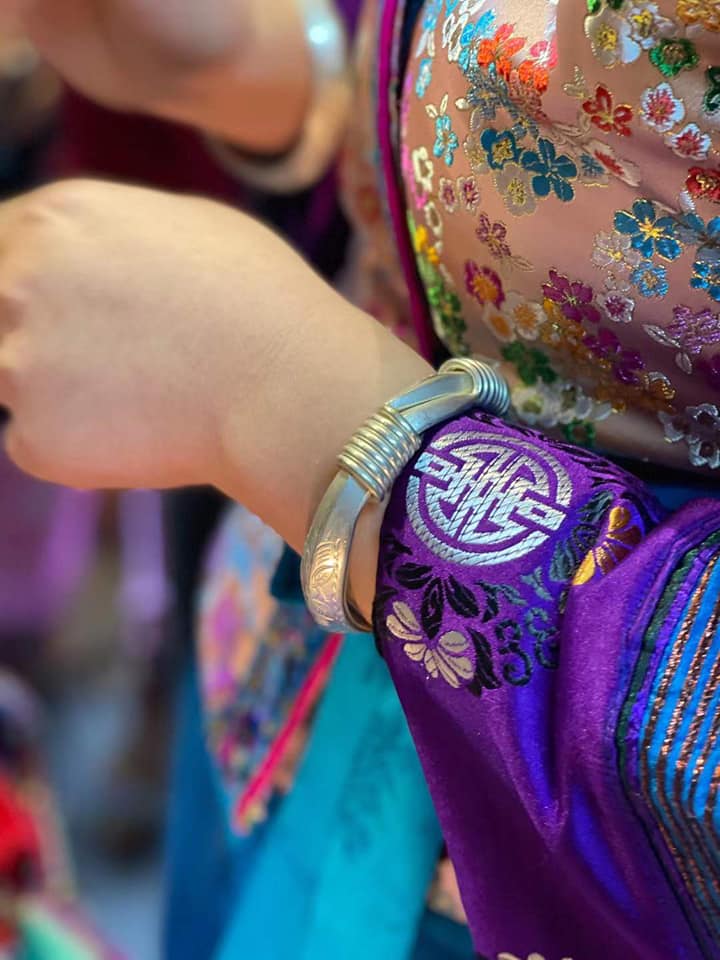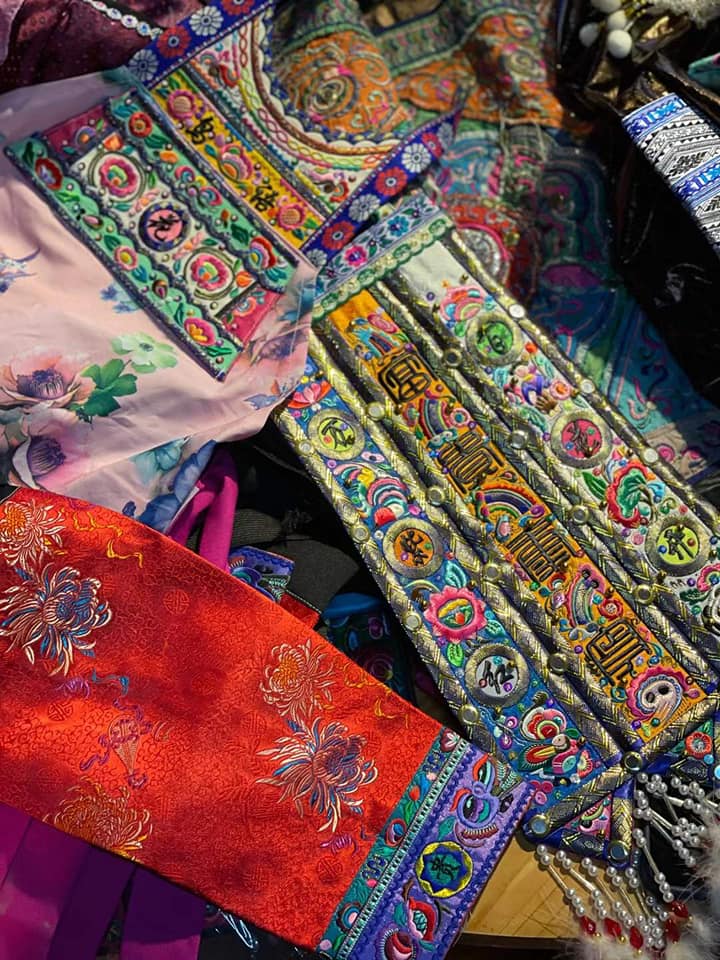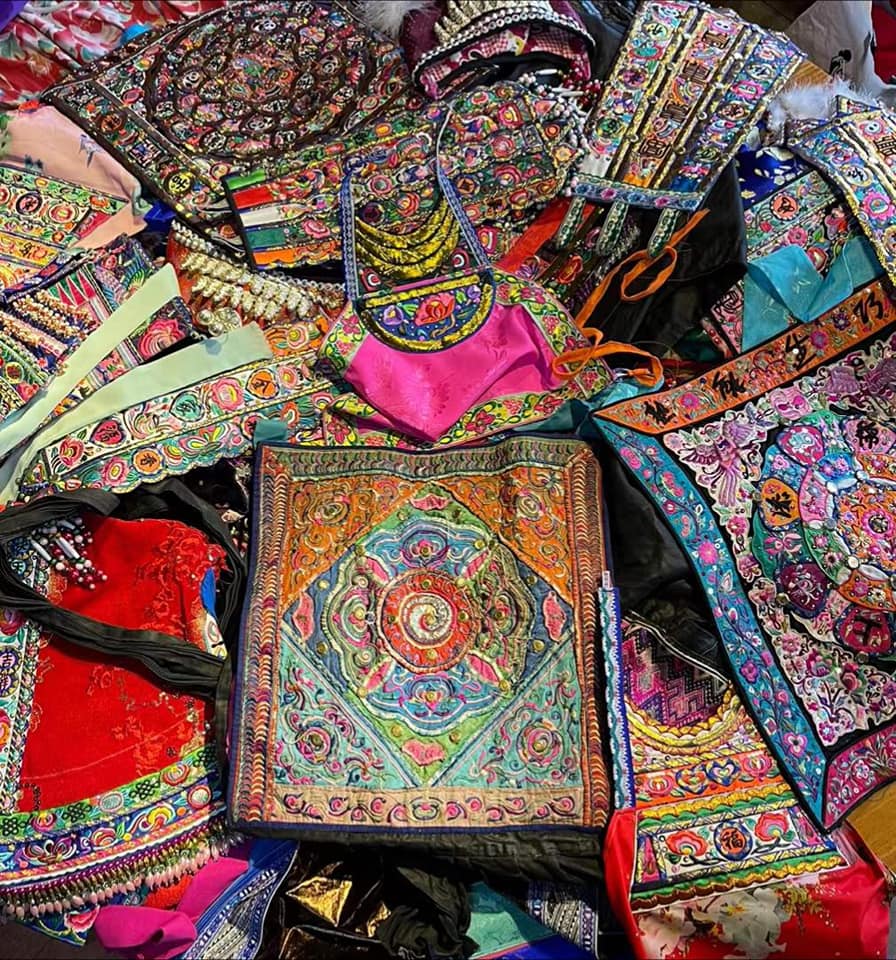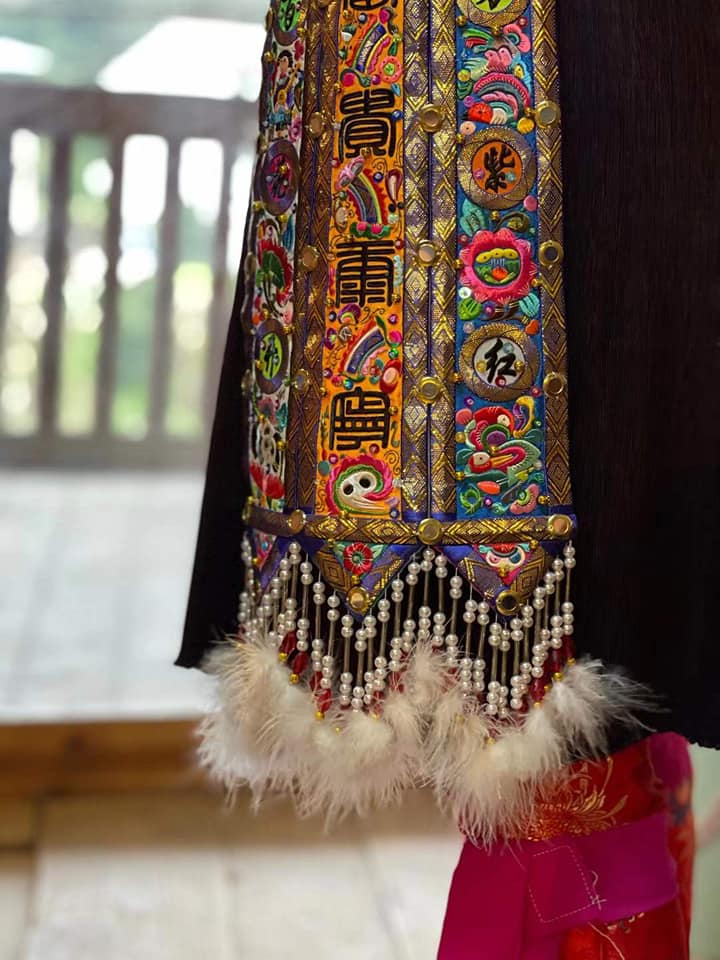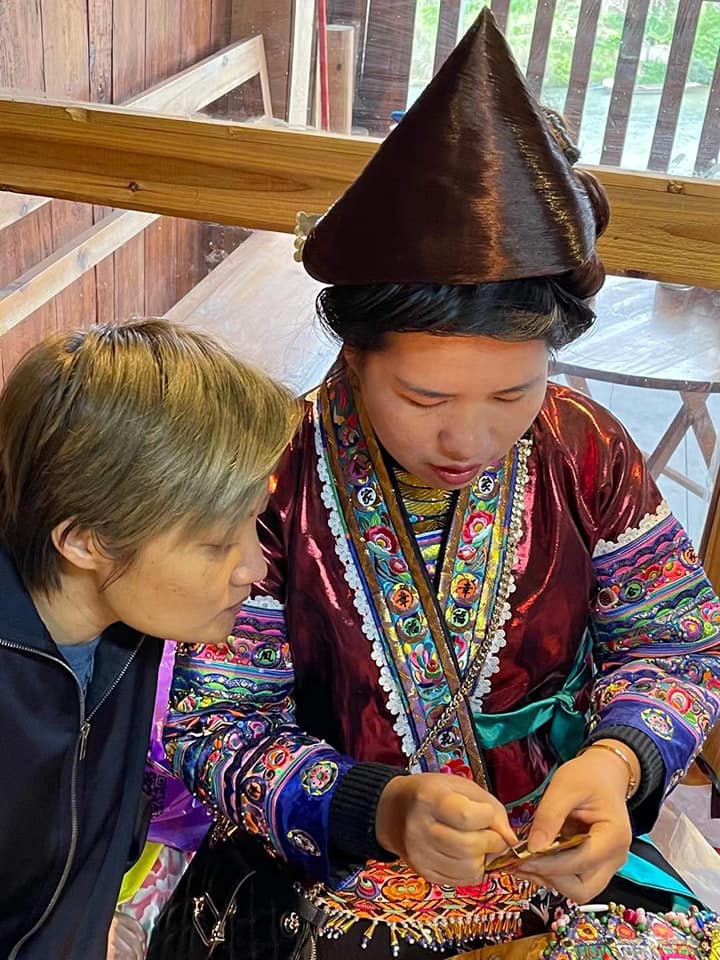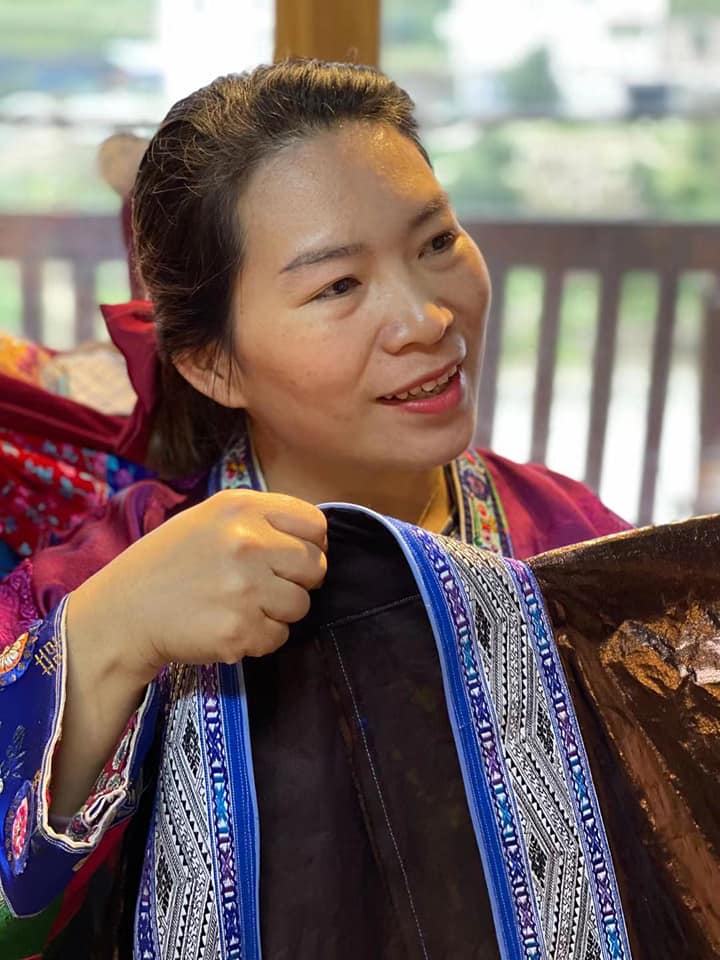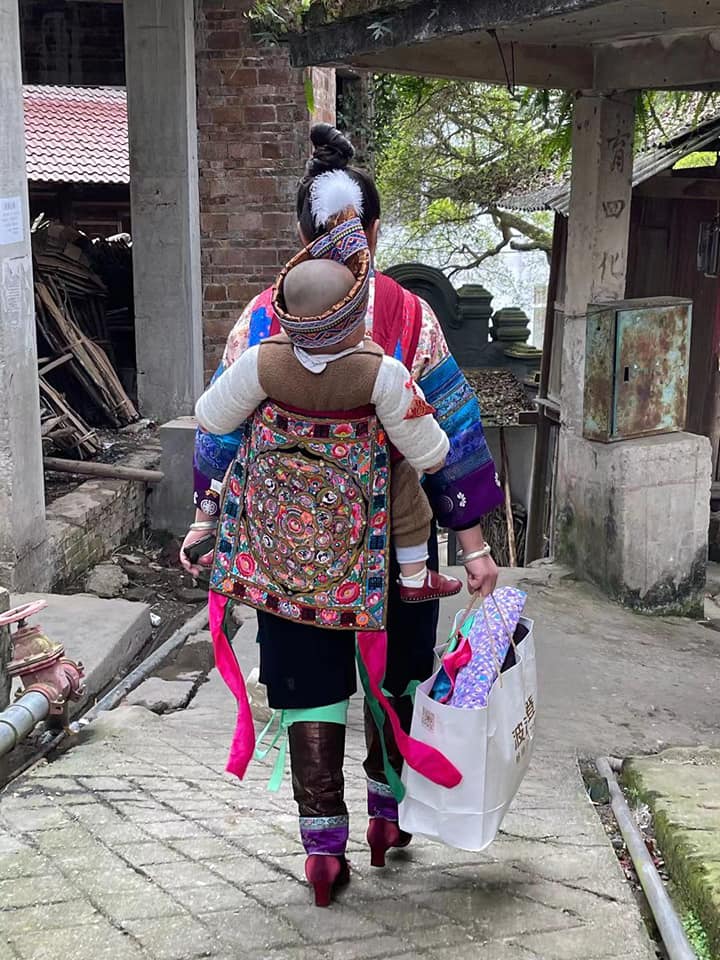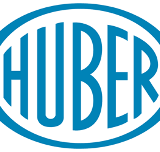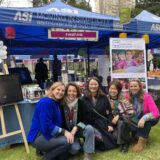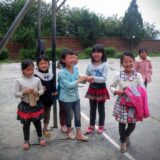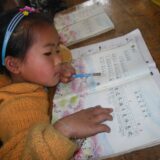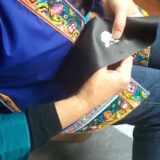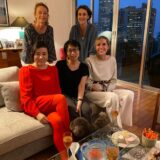Miao embroidery, a real art !
Miao embroidery has a history of over 2000 years. It is an essential and important aspect of Miao culture.
In the past, embroidery was a form of language used to narrate legends, past events, to express feelings or simply to illustrate daily life. Thus, each generation left a trace of its history through embroidery.
Elements of nature such as mountains, rivers, trees, flowers or animals are very often pictured in a stylised way.
Each place, each Miao village has its own system of symbols. In some areas, the Cypress leaf is a symbol of eternal life, the butterfly represents creation and the ancestors. In others, the dog is a symbol of loyalty, the bird of the protective Mother.
Although natural textiles such as hemp, silk or cotton are still popular with embroiderers, the use of synthetic threads and textiles has led to an evolution in processes and styles. Miao embroidery is made up of a multitude of stitches: cross stitch (shizi hua), front stitch (ping tiao), flat pass (ping xiu), outline stitch (suo bian xiu), knot stitch (dazi xiu), etc. There are also different forms of embroidery: with the application of a braid (bian xiu) or gathered braid (zhou xiu), with small metal cylinders (ti xiu) or with geometrical patterns (na jin xiu).
Many common objects are adorned with beautiful Miao embroidery: baby carriers, jewellery, clothes, costumes… Each creation is unique because each embroidered motif cannot be reproduced identically.
Today, the handicrafts and the richness of the Miao clothing are endangered, and traditional costumes are often abandoned for more modern clothes.
However, new generations of designers are beginning to integrate the expertise of Miao embroidery and are thus participating in the preservation of this art form. Couleurs de Chine also works to protect and promote the culture of the Guangxi minorities, particularly through renovation projects.
Thanks to Fabiola Liacy from Felip ByFab Pictures for these nice pictures

